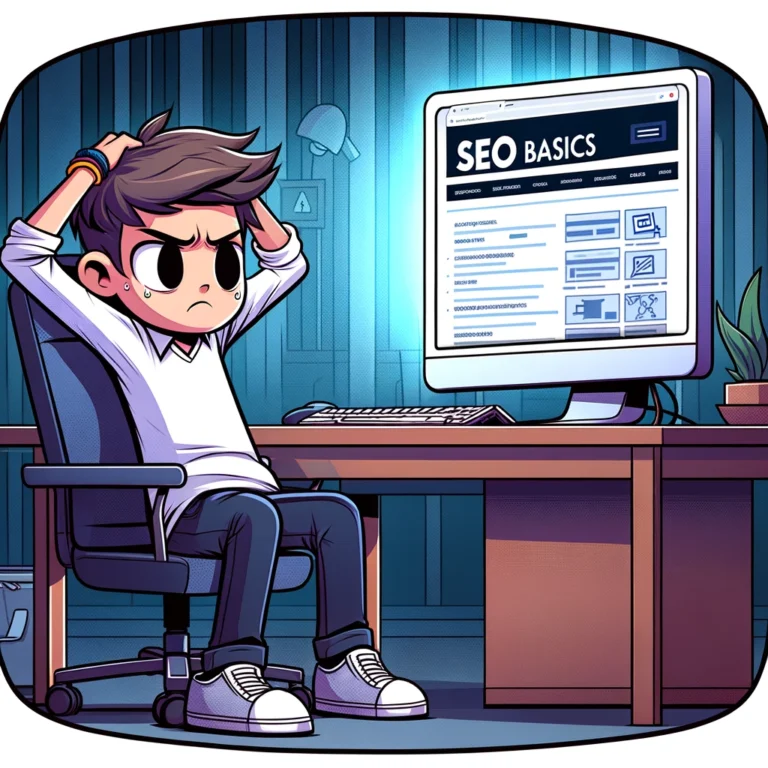Search engine optimization (SEO) involves a multitude of components, each playing a pivotal role in improving a website’s visibility and ranking on search engines like Google. Among these components, alt text (alternative text) for images is often overlooked, yet it holds significant importance in making web content more accessible and understandable to search engines. This article will explore what alt text is, why it is crucial for SEO, and how to effectively use it to boost your site’s performance.
Understanding Alt Text
Alt text, also known as “alternative text” or “alt attributes,” is a concise description that is added to the HTML code of an image on a website. It serves as a textual alternative to the image for search engines and visually impaired users who rely on screen readers to navigate the internet.
The primary purpose of alt text is to describe images to those who cannot see them. This description helps screen readers interpret what the image is about, providing a context that would otherwise be inaccessible. For search engines, alt text offers a clear indication of the image content, which is crucial since search engines can’t “see” images directly — they rely on accompanying text to understand the content.
Why Alt Text is Crucial for SEO
1. Improves Accessibility
The fundamental role of alt text is to enhance accessibility. Websites that are accessible tend to rank higher in search engines because they provide a better user experience. Accessibility is not just about catering to the needs of users with disabilities but also about making content usable for all. By implementing proper alt text, you ensure that everyone, regardless of visual ability, can understand the content on your site.
2. Enhances Image SEO
Images can drive traffic through image search engines like Google Images. When alt text is used effectively, it can help your images rank higher in these searches. This text tells search engines the context and subject matter of the images, which could be crucial for users searching for content related to your niche.
3. Supports Contextual Relevance
Alt text helps search engines understand the relevance of an image to the surrounding content. This relevance is a key factor in the overall SEO strategy, as it helps align your content with user queries. Proper use of alt text ensures that images contribute positively to the page’s context, enhancing your content’s authority and relevance.
How to Use Alt Text Effectively
To make the most out of alt text for SEO purposes, follow these best practices:
1. Be Concise and Descriptive
The best alt text is concise yet descriptive. Aim for a brief description that conveys the essence of the image while being straightforward. Avoid stuffing keywords as this can result in a negative user experience and might harm your SEO.
2. Avoid Over-Optimization
While it’s important to include relevant keywords in your alt text, over-optimization can lead to penalties from search engines. Use keywords naturally, ensuring they fit within the context of the image.
3. Think Like a User
When writing alt text, consider what information you would find helpful if you could not see the image. This user-centric approach not only improves accessibility but also aligns with the search engines’ goal of providing valuable content to users.
4. Use for All Images
Ensure that all images on your website have alt text, especially those that contribute to your content’s message and those used in links. This not only boosts SEO but also improves the navigation and understanding of your site for users relying on screen readers.
Alt text is a crucial component of SEO that enhances both accessibility and user experience. By providing clear, concise, and contextually relevant descriptions for your images, you can improve your site’s visibility and ranking. Remember, effective SEO is about optimizing for both search engines and users, and alt text helps bridge that gap. Incorporate these strategies into your SEO plan, and watch your website’s accessibility and performance soar.

The Impact of Alt Text on User Engagement and Bounce Rate
Reduces Bounce Rate
The inclusion of well-crafted alt text can contribute to a lower bounce rate, which is the percentage of visitors who leave the site after viewing only one page. When images fail to load due to poor connection speeds or errors, the alt text provides a textual context that might encourage visitors to stay longer on the site. This contextual clue can help retain visitors, who might otherwise leave a page when images do not display properly.
Enhances User Interaction
When users understand the content of images through descriptive alt text, they are more likely to engage with the rest of the site’s content. For instance, e-commerce sites can benefit significantly from accurate image descriptions that aid in the purchasing decision process. By understanding what is depicted in product images, users are more confident in their buying choices, which can increase conversion rates.
Alt Text and Its Role in Semantic HTML
Semantic HTML is the practice of writing HTML that signifies the content it contains, making it both human-readable and machine-understandable. Alt text contributes to semantic HTML by defining the role of an image on a page. This clarification helps search engines index web content more effectively and accurately, aligning your site’s content with relevant queries.
Supports Rich Snippets and Visual Searches
Rich snippets — enhanced results shown on search engines — often rely on well-structured and semantically rich HTML, including appropriate alt text. These snippets can include image thumbnails, which are directly influenced by the presence of alt text. Furthermore, with the rise of visual searches, having descriptive alt text allows your images to appear more prominently in visual query results, enhancing overall visibility.
Best Practices for Crafting Effective Alt Text
Here are additional guidelines to ensure your alt text is effectively enhancing your SEO efforts:
Avoid Generic Descriptions
Instead of vague descriptions like “image” or “photo,” provide details that offer insights into the image’s context. For example, “A golden retriever playing fetch in a park” is much more descriptive and useful than “dog.”
Include Spatial Relationships
If the image conveys important spatial or color information, mention it. For instance, “A chart showing sales growth from 2010 to 2020 in blue and red bars” gives users who can’t see the image a clear understanding of its content.
Don’t Repeat Captions
If your image is accompanied by a caption that already describes it, ensure the alt text offers new information or a simplified explanation rather than repeating the same content.
Keep Updates Regular
As your site evolves, so should your alt text. Ensure that it remains relevant with regular updates, especially if the image’s context or content changes over time.
Conclusion
Incorporating thoughtful and well-crafted alt text into your website’s images is not just about adhering to SEO best practices—it’s about embracing the broader accessibility standards that create inclusive web experiences. Alt text plays a critical role in ensuring that all users, regardless of their ability to visually interpret your site’s content, can understand and interact with your pages effectively.
By mastering the art of alt text, you not only optimize your site for search engines but also foster a more engaging and accessible digital environment. This dual benefit highlights the significance of alt text in your overall digital strategy, making it a key component not to be overlooked.
Remember, SEO is an ongoing journey that involves continual learning and adapting. Alt text is just one part of this larger puzzle, but it’s a part with the power to significantly influence both your site’s accessibility and its search engine success.



